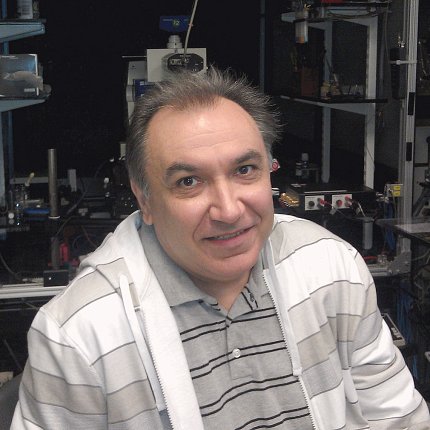NINDS’s Chub Mourned

Dr. Nikolai Chub, a staff scientist in the section on developmental neurobiology, NINDS, died Jan. 10 from complications following a heart attack. He had worked at NIH for 28 years.
“Nikolai was a world-class neurophysiologist who pioneered our understanding of the mechanisms regulating the genesis and organization of motor activity in the developing spinal cord,” said Dr. Michael O’Donovan, chief of the section.
Chub obtained his Ph.D. in 1992 from the Bogomoletz Institute of Physiology, Kiev, Ukraine, examining the properties of spontaneous and drug-induced activity in the isolated spinal cord of chick embryos. He joined NINDS in 1992, first as a visiting fellow and then as a staff scientist in 2001, to continue his work on the development of motor activity in the chick embryo.
One of Chub’s most cited papers was published in the Journal of Neuroscience in 1998. In it, he showed that spontaneous rhythmic bursting in the chick embryo could be generated either by purely excitatory or by purely inhibitory spinal networks. This demonstrated that spontaneous activity in the developing spinal cord does not depend on the precise neuronal architecture of the networks generating it. Rather, it was a consequence of the excitatory nature of the classically inhibitory neurotransmitters glycine and GABA.
“To investigate the mechanisms responsible for this activity, in a technical tour de force, Nikolai then applied the perforated patch clamp technique to motoneurons in the chick embryo spinal cord. He was the first person in the world to obtain such recordings from the intact isolated spinal cord,” said O’Donovan. “He showed that the chloride equilibrium potential is continuously modulated by spontaneous activity such that it increases between bursting episodes and is reset by the episode to a lower level. Between spontaneous episodes, the equilibrium potential recovers due to the action of an inwardly directed chloride transporter.”
Later modeling work showed that this mechanism alone was sufficient to account for the occurrence of activity, thereby identifying a completely novel mechanism for spontaneous episodic bursting.
Chub’s ideas have found wide acceptance within the neuroscience community, noted O’Donovan, and it is now appreciated that the general principles he uncovered in the spinal cord apply throughout the developing nervous system.
Chub pioneered the use of chloride imaging in the spinal cord, which confirmed his electrophysiological observations. He also had a fruitful collaboration with Dr. Peter Wenner at Emory University that revealed that activity-dependent changes in the chloride equilibrium potential represented a new mechanism underlying homeostatic plasticity.
Toward the end of his career, Chub became interested in understanding how stimulation of motoneurons could activate spinal networks. He focused on the role of astrocytes and oligodendrocytes in this process. He showed, using calcium imaging and whole cell recording, that glial cells became active following stimulation of motor axons.
“His tragic and premature death prevented him from exploring this remarkable observation further,” O’Donovan said. “Nikolai was an extraordinarily talented electrophysiologist who was universally respected by his scientific peers. He was a gentle and private individual who was devoted to his work and well-liked by his colleagues. He will be missed not only by his coworkers at NIH but also by the wider community of spinal cord physiologists.”
Chub is survived by his wife, 2 daughters and 2 grandchildren.
